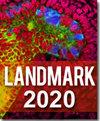Structure-activity relationship data and ligand-receptor interactions identify novel agonists consistent with sulfakinin tissue-specific signaling in Drosophila melanogaster heart.
IF 3.1
4区 生物学
Q2 Immunology and Microbiology
引用次数: 1
Abstract
BACKGROUND The structures and activities of invertebrate sulfakinins that influence gut motility and heart rate are like the vertebrate cholecystokinin (CCK) peptides. Typical of sulfakinin precursors Drosophila melanogaster encodes non-sulfated drosulfakinin I (nsDSK I; FDDYGHMRF-NH2) and nsDSK II (GGDDQFDDYGHMRF-NH2) that bind DSK-R1 and DSK-R2. To explore the role of the nsDSK II N-terminal extension (GGDDQ) in gut we delineated its structure-activity relationship (SAR) and identified novel agonists. We then predicted the nsDSK II extension SAR is tissue specific consistent with cardiac CCK structure activity and signaling being different from gut. METHODS To evaluate our hypothesis, we tested single-substituted alanine and asparagine analogs in heart. RESULTS We found alanyl-substituted analogs were less active in heart than nsDSK II; in gut they include a super agonist and a protean agonist. Additionally, we discovered ns[N4]DSK II was more active than nsDSK II in pupal heart, while ns[N3]DSK II was inactive. In contrast, ns[N3]DSK II and ns[N4]DSK II were super agonists in adult heart, yet inactive in larva. Although we reported nsDSK II acts through DSK-R2 in gut, its identity in heart was unknown. CONCLUSIONS Here we reviewed ligand-receptor interactions in conjunction with SAR data to suggest nsDSK II acts through DSK-R1 in heart consistent with sulfakinin tissue-specific signaling.结构-活性关系数据和配体-受体相互作用鉴定了与果蝇心脏组织特异性信号一致的新型激动剂。
背景:影响肠道运动和心率的无脊椎动物巯基缩氨酸的结构和活性与脊椎动物胆囊收缩素(CCK)肽相似。黑腹果蝇编码非磺化的磺胺基亚霉素I (nssdsk I;FDDYGHMRF-NH2)和nsDSK II (GGDDQFDDYGHMRF-NH2)结合DSK-R1和DSK-R2。为了探讨nssdsk II n端延伸(GGDDQ)在肠道中的作用,我们描述了它的构效关系(SAR)并鉴定了新的激动剂。然后我们预测nssdsk II扩展SAR具有组织特异性,与心脏CCK结构活性一致,信号传导不同于肠道。方法为了验证我们的假设,我们在心脏中测试了单取代丙氨酸和天冬酰胺类似物。结果alanyl-取代类似物在心脏中的活性低于nsDSK II;在肠道中,它们包括一种超级激动剂和一种变形激动剂。此外,我们发现ns[N4]DSK II在蛹心脏中比nsDSK II更活跃,而ns[N3]DSK II则不活跃。ns[N3]DSK II和ns[N4]DSK II在成虫心脏中表现为超级激动剂,而在幼虫中表现为无活性。尽管我们报道了nsDSK II在肠道中通过DSK-R2起作用,但其在心脏中的身份尚不清楚。本研究回顾了配体与受体的相互作用以及SAR数据,表明nsDSK II通过心脏中的DSK-R1起作用,与磺胺金素组织特异性信号传导一致。
本文章由计算机程序翻译,如有差异,请以英文原文为准。
求助全文
约1分钟内获得全文
求助全文
来源期刊

Frontiers in Bioscience-Landmark
生物-生化与分子生物学
CiteScore
3.40
自引率
3.20%
发文量
301
审稿时长
3 months
期刊介绍:
FBL is an international peer-reviewed open access journal of biological and medical science. FBL publishes state of the art advances in any discipline in the area of biology and medicine, including biochemistry and molecular biology, parasitology, virology, immunology, epidemiology, microbiology, entomology, botany, agronomy, as well as basic medicine, preventive medicine, bioinformatics and other related topics.
 求助内容:
求助内容: 应助结果提醒方式:
应助结果提醒方式:


